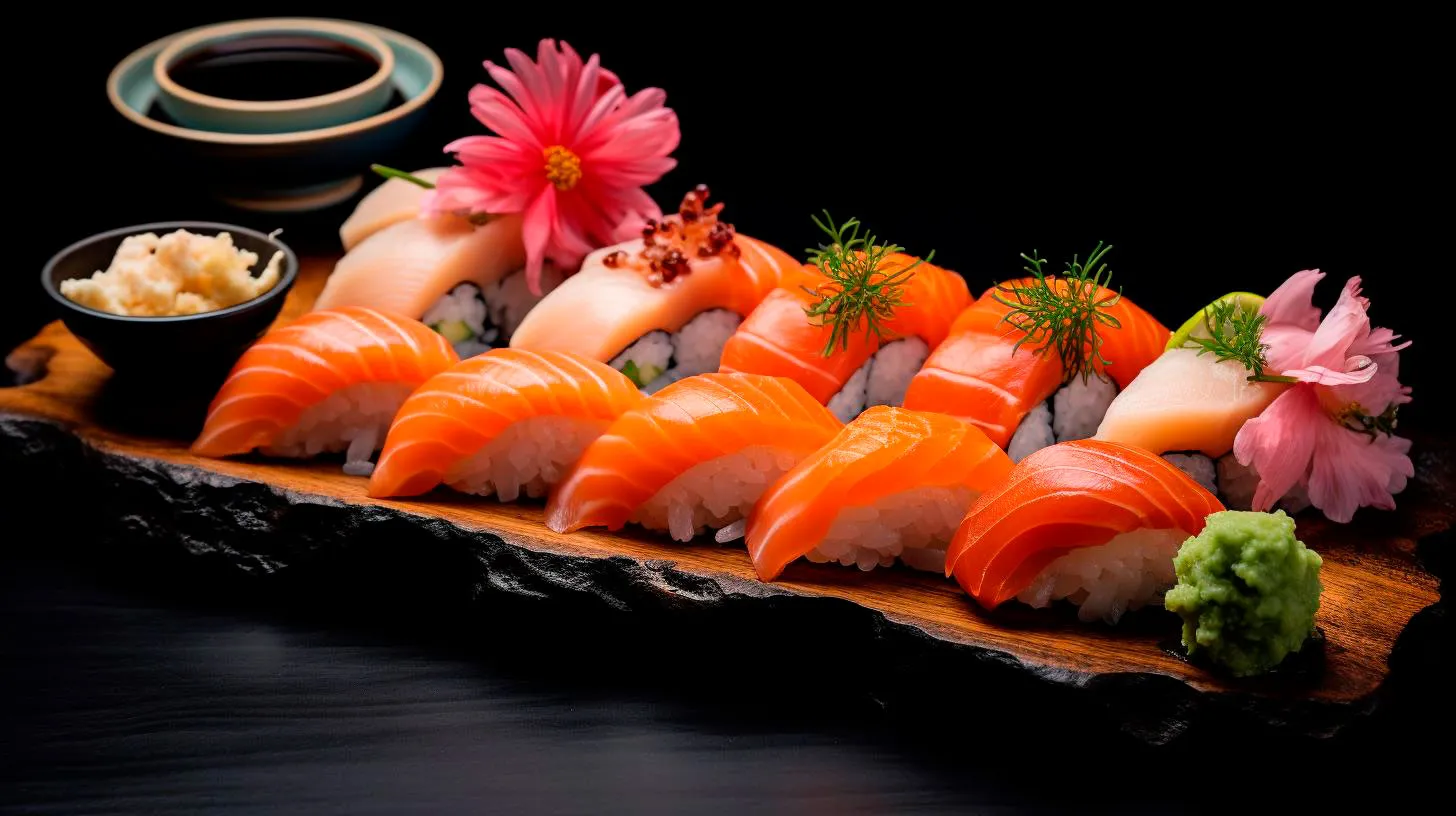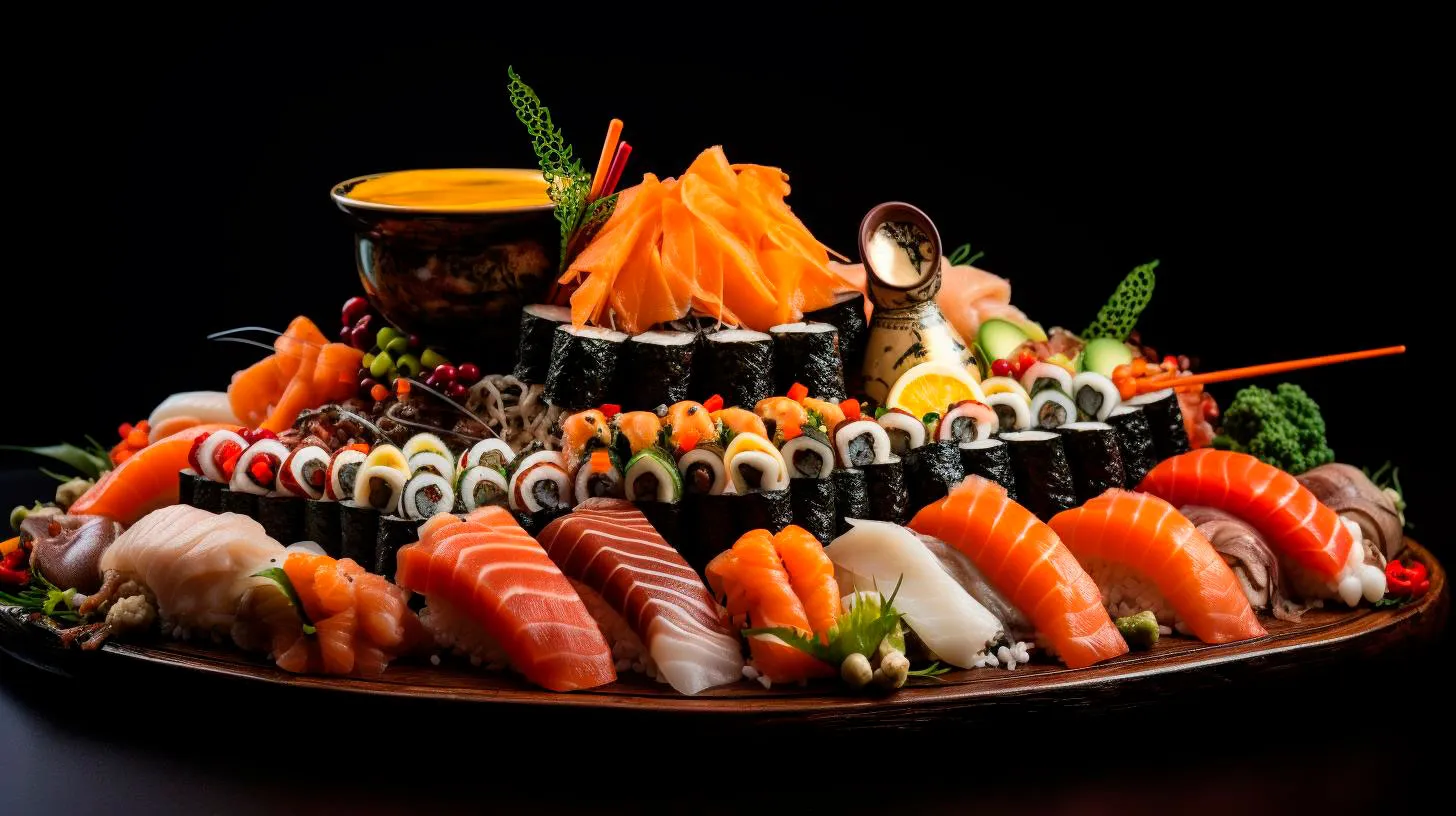Exploring How Japanese Tea Has Shaped Artistic Expression Throughout History
In this article, we will delve into the fascinating relationship between Japanese tea and art, exploring how it has shaped various artistic mediums and continues to inspire creativity.
The Traditional Japanese Tea Ceremony as an Art Form
The traditional Japanese tea ceremony, known as “Chanoyu” or “Sado,” is a highly choreographed ritual that showcases the beauty and elegance of tea preparation. Dating back to the 9th century, this ceremony has been considered an art form in itself and has greatly influenced Japanese aesthetics.
- Attention to Detail: The tea ceremony emphasizes meticulous attention to detail, from the arrangement of tea utensils to the precise way of whisking the tea powder. This level of precision has influenced other Japanese art forms, encouraging artists to pay close attention to even the tiniest details in their work.
- Simplicity and Minimalism: The tea ceremony promotes simplicity and minimalism, focusing on the beauty of everyday objects. This aesthetic has had a profound impact on various art forms, including painting, pottery, and calligraphy, where minimalistic and serene compositions are highly valued.
- Harmony and Tranquility: The tea ceremony aims to create a harmonious and tranquil environment for guests. This concept of harmony, known as “wa,” has been central to Japanese artistic expression, influencing the use of balanced compositions, subdued colors, and tranquil themes in traditional Japanese art.
The Influence of Tea on Japanese Painting
Tea, with its association with aesthetics and tranquility, has been a major source of inspiration for Japanese painters throughout history. The tradition of tea has influenced various painting styles, such as the renowned ink wash painting or “sumi-e,” as well as the vibrant and colorful “Nihonga” style.
- Ink Wash Painting: Inspired by the philosophy of tea, ink wash painting focuses on simplicity, minimalism, and capturing the essence of the subject. Artists use minimal strokes to convey the tranquility and harmony associated with tea, often depicting landscapes, flowers, or everyday objects.
- Nihonga: Tea motifs and the ambiance of the tea ceremony have also found their way into Nihonga paintings. This style, which combines traditional Japanese techniques with Western influences, often includes depictions of teaware, tea leaves, or serene tea rooms, reflecting the unique relationship between tea and Japanese culture.
Tea-inspired Pottery and Ceramics
The tea ceremony has not only influenced painting but has also left a significant mark on the world of pottery and ceramics in Japan. Tea bowls, known as “chawan,” emphasize simplicity, irregularity, and a natural aesthetic that celebrates imperfections. These characteristics have influenced various pottery styles, such as Raku ware and Hagi ware, both of which are closely associated with tea culture.
- Raku ware: Raku ware, developed in the 16th century for the tea ceremony, embodies the concept of wabi-sabi, which finds beauty in imperfections and simplicity. Tea enthusiasts greatly appreciate the irregular shapes, unique glazes, and the tactile experience of holding a Raku tea bowl.
- Hagi ware: Hagi ware, originating from the town of Hagi, is another pottery style strongly connected to tea. Known for its earthy colors and rough textures, Hagi ware is often used during tea ceremonies due to its ability to enhance the flavor and aroma of tea.
Japanese Tea and Literature
Japanese tea has not only influenced visual arts but has also made its way into the realm of literature. Haiku, a traditional form of Japanese poetry, often includes references to tea and tea-related imagery. Tea has become a common motif in haiku, symbolizing tranquility, nature, and the essence of the Japanese aesthetic.
- Haiku: Haiku poems typically consist of three lines and are known for their brevity and focus on capturing a single moment or emotion. Many haiku poets have taken inspiration from tea, incorporating its imagery to evoke feelings of serenity and harmony with nature.
- Waka and Tankas: Traditional Japanese poetry forms like waka and tankas have also featured tea-related themes. These poetic forms often explore seasonal changes and the beauty of the natural world, with tea serving as a symbol of the ephemeral nature of life itself.
Key Takeaways
Japanese tea has left an indelible mark on various art forms throughout history, shaping artistic expression in painting, pottery, and literature. The key takeaways from this exploration are:
- Japanese tea ceremonies emphasize attention to detail, simplicity, and harmony, influencing other art forms in Japan.
- Tea has inspired painting styles such as ink wash painting and Nihonga, reflecting the aesthetic principles of tea.
- Pottery styles like Raku ware and Hagi ware have been deeply influenced by the tea ceremony’s focus on imperfections and natural simplicity.
- Tea motifs and references can be found in traditional Japanese poetry forms like haiku, adding depth and symbolism to the written word.
Japanese tea continues to be cherished not only for its taste but also for its artistic and cultural significance. Exploring the relationship between tea and art offers a deeper understanding of Japan’s rich heritage and the profound impact of tea on artistic expression throughout history.
Unveiling the Cultural Significance of Japanese Tea in Historical Context
Today, we will delve into the historical context of Japanese tea, exploring its cultural significance and shedding light on its unique attributes.
The Origins of Japanese Tea
Tea was first introduced to Japan during the 9th century by Buddhist monks returning from China. These monks brought back tea seeds and the knowledge of tea cultivation and preparation techniques. Over time, tea cultivation spread throughout Japan, leading to the birth of a distinct tea culture. Today, Japan is renowned for producing high-quality tea, with matcha, sencha, and gyokuro being the most famous varieties.
The Tea Ceremony: A Symbol of Tranquility
The Japanese tea ceremony, known as “sado” or “chanoyu,” is a highly ritualistic practice that dates back centuries. Rooted in Zen Buddhism, the tea ceremony embodies the principles of harmony, respect, purity, and tranquility. It is a spiritual and aesthetic experience that goes beyond a mere act of drinking tea.
During the tea ceremony, guests are invited into a traditional tea room adorned with minimalistic and carefully selected decorations. The host meticulously prepares and serves the tea, using specialized utensils and following precise steps. The atmosphere is serene, allowing participants to immerse themselves in the moment, appreciating the beauty and symbolism of each gesture.
Key takeaways from the Japanese tea ceremony:
- The tea ceremony is a meditative practice that promotes mindfulness.
- It emphasizes the importance of simplicity and aesthetics in Japanese culture.
- Tea is seen as a means of connecting with nature and achieving inner peace.
- The ceremony fosters a sense of community and respect among participants.
The Cultural Significance of Tea Gardens
In Japan, tea gardens, known as “chaniwa,” play a vital role in tea culture. These meticulously designed spaces serve as gathering places for the tea ceremony, combining natural elements with human craftsmanship. Tea gardens are carefully crafted to reflect the changing seasons and provide a serene atmosphere for contemplation and relaxation.
Advantage and significance of tea gardens:
- Tea gardens offer a peaceful retreat from the bustling city life.
- They provide a tranquil environment for self-reflection and meditation.
- Tea gardens capture the essence of nature and offer a space for appreciation.
The Influence of Tea on Art and Literature
Tea has not only permeated Japanese cultural practices but has also had a profound impact on various art forms. From traditional paintings to poetry, tea has inspired artists and writers alike. The concept of “Wabi-Sabi,” rooted in the tea ceremony philosophy, celebrates imperfections and cherishes simplicity, which can be seen in traditional Japanese art and literature.
Key features of the influence of tea on art and literature:
- Tea inspires artists to capture the beauty of simplicity and imperfections in their works.
- Literature often incorporates tea-related symbolism and themes to convey deeper meanings.
- Tea is a subject of artistic expression and appreciation.
The Meditative Qualities of Japanese Tea
Drinking Japanese tea, particularly matcha, has gained popularity as a mindful practice around the world. The unique preparation method of whisking powdered tea and consuming it in its entirety creates a meditative experience.
Key takeaways from the meditative qualities of Japanese tea:
- Tea-drinking can be a mindfulness practice in your daily routine.
- Matcha is known for its calming and focusing effects on the mind.
- Tea rituals can provide a moment of pause and tranquility in our fast-paced lives.
Conclusion
The cultural significance of Japanese tea goes far beyond a simple beverage. It is intertwined with spirituality, aesthetics, and a celebration of life’s simple pleasures. From the tea ceremony to tea gardens, this cherished tradition continues to shape Japanese culture. Embracing the art of tea can bring a sense of tranquility and appreciation into our lives, allowing us to connect with nature, share moments of serenity, and find beauty in simplicity.
The Role of Japanese Tea in Classical Literature
In this article, we will explore the role of Japanese tea in classical literature and understand how it has shaped the narrative in notable literary pieces.
The Symbolism of Japanese Tea in Literature
In Japanese literature, tea is often used symbolically to convey deeper meanings. It represents tranquility, harmony, and the essence of Japanese aesthetics. Just as the ritual of tea-making requires mindfulness and patience, authors often use tea as a metaphor to illustrate the value of slowing down, appreciating the present moment, and finding solace in simplicity.
Masters of Japanese literature, such as Matsuo Basho and Murasaki Shikibu, skillfully incorporated tea symbolism into their works. For instance, in “The Narrow Road to the Deep North,” Basho describes the serene atmosphere of a tea house nestled in nature, emphasizing the beauty of simplicity. Similarly, in “The Tale of Genji,” Murasaki Shikibu depicts tea ceremonies as a means to create connections, foster relationships, and reflect the intricacies of courtly life in medieval Japan.
The Role of Tea Ceremonies
Tea ceremonies, also known as chanoyu or ‘the way of tea,’ have had a profound impact on Japanese literature. These ceremonies involve the preparation, presentation, and consumption of matcha, a powdered green tea. The meticulous choreography of the tea ceremony reflects the elegance and grace that influenced many authors.
- Cultural Significance: Tea ceremonies provided authors with an avenue to delve into the cultural landscape of Japan, exploring themes of tradition, spirituality, and social hierarchy.
- Social Interaction: Tea gatherings became focal points for social interactions, conveying the nuances of interpersonal relationships and courtly manners.
- Simplicity and Harmony: The Zen-inspired philosophy of tea ceremonies encouraged simplicity, mindfulness, and the appreciation of nature, themes that resonated deeply with authors and their readers.
Tea Houses in Literature
In classical Japanese literature, tea houses often serve as settings for important events, conversations, and contemplation. These carefully crafted spaces provided authors with a backdrop to explore various themes and interweave cultural commentary. Tea houses, whether grand or modest, represent a microcosm of Japanese society and its traditions.
Through their writings, authors illustrated the intricacies of tea house architecture, the art of tea preparation, and the sense of intimacy that arises from such gatherings. Moreover, tea houses are places where characters often reveal their true selves, engage in deep reflections, and forge connections with others.
Key Takeaways:
As we delve into the role of Japanese tea in classical literature, here are some key takeaways:
- Symbolism: Japanese tea is often used as a metaphor to convey tranquility, harmony, and the appreciation of simplicity.
- Cultural Significance: Tea ceremonies provide authors with a rich cultural landscape to explore, showcasing the traditions, spirituality, and social hierarchy of Japan.
- Tea Houses: Tea houses serve as important settings for events, conversations, and contemplation, providing a space for characters to reveal their true selves and forge connections.
Japanese tea’s timeless presence in classical literature showcases its enduring influence on Japanese society. Through its symbolism, tea ceremonies, and the spaces created by tea houses, it continues to shape narratives and offer profound insights into the country’s culture and aesthetics. As you enjoy your next cup of Japanese tea, take a moment to appreciate its rich history and the role it has played in the world of classical literature.
Tracing the Influence of Japanese Tea in Artistic Masterpieces
In this article, we delve into the captivating journey of Japanese tea and explore how it has left an indelible mark on the world of art.
The Historical Significance of Japanese Tea
Before delving into the artistic influence of Japanese tea, let’s briefly explore its historical significance. Tea was introduced to Japan in the 9th century during the Tang dynasty in China. Buddhist monks brought tea seeds and the associated ritual of tea drinking back with them, making tea an integral part of Japanese Zen Buddhism.
Over the centuries, tea cultivation in Japan evolved, giving rise to unique tea ceremonies and specialized utensils. The spiritual and meditative aspects of tea became profoundly ingrained in Japanese culture, capturing the attention of artists seeking inspiration.
The Impact of Japanese Tea on Visual Arts
The influence of Japanese tea extends beyond the tea ceremony and has seeped into various artistic genres. From calligraphy and painting to ceramics and architecture, we find glimpses of tea’s aesthetic allure.
1. Tea in Painting and Calligraphy
- Tea gardens and tea houses often served as subjects for landscape paintings, capturing the serene and contemplative ambiance of tea gatherings.
- Calligraphers, inspired by the tranquil atmosphere of tea ceremonies, infused their brushwork with the grace and mindfulness associated with the tea practice.
2. Tea in Ceramics
- Japanese tea culture heavily influenced ceramic art, giving rise to unique tea utensils such as tea bowls, tea caddies, and water jars.
- The aesthetics of tea ceramics focused on simplicity, rusticity, and imperfections, as they aligned with the Japanese concept of wabi-sabi, emphasizing the beauty in impermanence and imperfection.
3. Tea in Architecture
- Tea houses, designed specifically for tea ceremonies, showcase the influence of tea on Japanese architecture.
- The simple and understated designs of tea houses reflect the principles of tranquility and harmony that are integral to the tea ceremony.
The Key Takeaways
As we explore the influence of Japanese tea on artistic masterpieces, here are some key takeaways:
- Tea, brought to Japan centuries ago, has become deeply ingrained in its culture and traditions.
- The tea ceremony, a ritualistic practice promoting mindfulness and tranquility, has inspired various art forms.
- Painting and calligraphy often depict tea-related subjects, capturing the serene ambiance and grace of tea gatherings.
- Tea ceramics, characterized by simplicity and imperfections, reflect the beauty in impermanence.
- Tea houses, designed for tea ceremonies, exhibit architectural principles of tranquility and harmony.
Japanese tea continues to inspire artists, enabling them to find beauty and meaning in moments of introspection and tranquility. Its influence on various art forms encapsulates the profound impact of tea on the artistic landscape. As we sip our favorite cup of tea, let’s appreciate how its timeless charm continues to inspire both our senses and the art that surrounds us.



